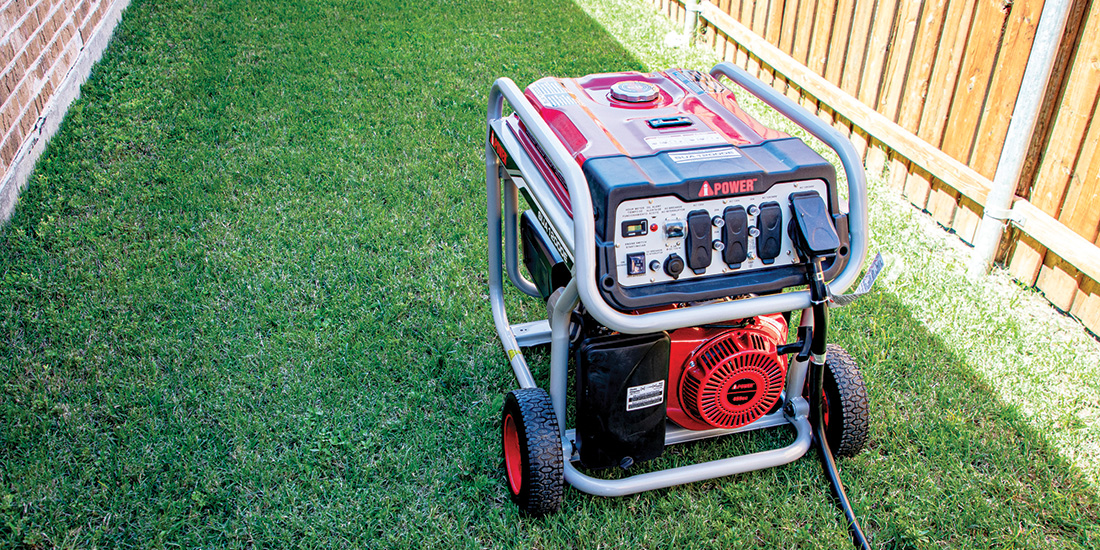How to stay safe when using portable generators

EVEN WITH OUR year-round efforts to upgrade infrastructure, implement proactive vegetation management and inspect lines for potential problems, power outages can still happen for various reasons.
When they do, some CoServ Members turn to portable power generators to power appliances, lights and devices. It’s important for Members to read the instruction manual and follow those guidelines during setup and operation.
What are the dangers?
Carbon monoxide poisoning:
✔ ALWAYS:
Place the generator at least 20 feet from doors and windows.
✘ NEVER:
Operate a portable generator indoors or inside a garage.
? WHY:
The exhaust includes carbon monoxide, an odorless, colorless and tasteless gas that can be deadly if inhaled. The CO molecules attach to the hemoglobin in your blood and, after extended exposure, prevent blood from carrying oxygen throughout the body, causing asphyxiation.
Electrocution or overheating:
✔ ALWAYS:
Make sure the extension cords connected to the generator are properly rated for the load placed on them.
✘ NEVER:
Overload the cord by plugging too many items into it.
? WHY:
Overloading the extension cord could cause it to overheat or spark a fire.
Backfeeding:
✔ ALWAYS:
Use a transfer switch (inspected by CoServ) if the generator is connected to your home’s circuits. The transfer switch automatically switches back to grid power when power is restored.
✘ NEVER:
Connect a generator to your home without proper safety equipment. It’s a violation of the CoServ tariff.
? WHY:
The transfer switch prevents electricity from flowing backward through your meter and onto the grid, which can backfeed the transformer and create dangerous voltage levels. This poses risks not only to CoServ linemen restoring power but also anyone near a downed line in the area.
A safe alternative:
The safest way to connect a portable generator to your home’s circuits is through a Generlink Transfer Switch. It plugs directly into your CoServ meter and prevents electricity from flowing back on to the grid. CoServ requires installation by a qualified professional.
Talk to our experts:
Have a question about generators?
Our experts are ready to answer questions and guide you through the process. Email them at [email protected].
